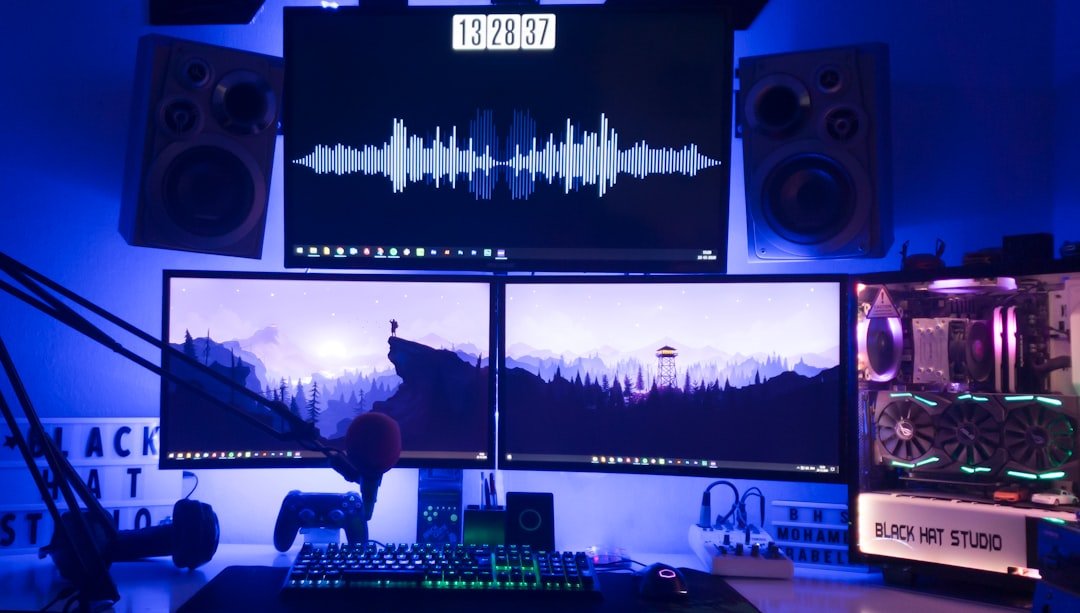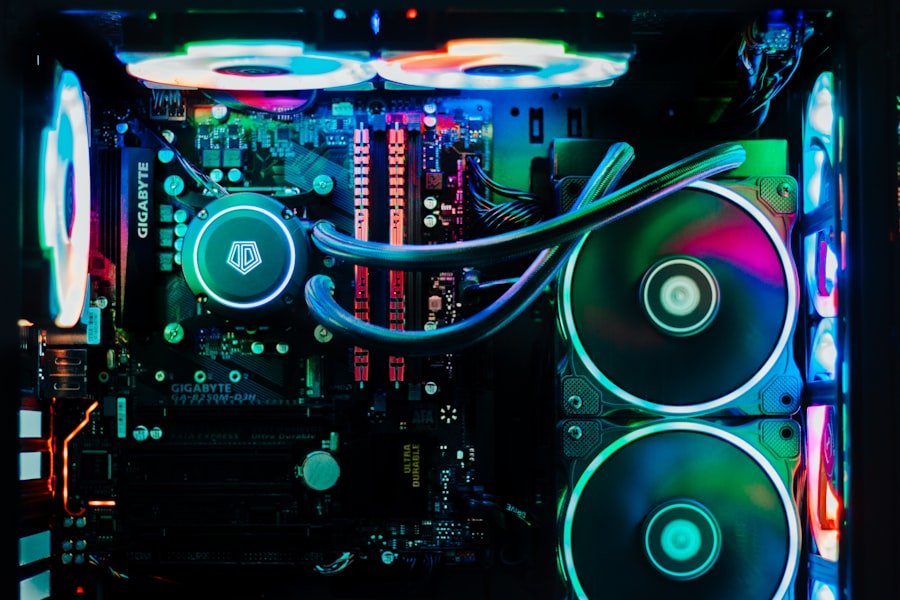Now Reading: The Ultimate PC Build Guide for Gamers
-
01
The Ultimate PC Build Guide for Gamers
The Ultimate PC Build Guide for Gamers

As I delve into the world of PC gaming, I find it essential to grasp the fundamental concepts that underpin this exhilarating hobby. At its core, PC gaming involves using a personal computer to play video games, which can range from simple indie titles to graphically intensive AAA games. Unlike console gaming, where hardware is fixed and often limited, PC gaming offers a vast landscape of customization and flexibility.
This adaptability allows me to tailor my gaming experience to my preferences, whether that means enhancing graphics, improving frame rates, or even modifying games themselves. One of the most appealing aspects of PC gaming is the sheer variety of games available. From immersive role-playing games (RPGs) to fast-paced first-person shooters (FPS), the options are nearly limitless.
Additionally, the PC gaming community is vibrant and diverse, with forums, streaming platforms, and social media groups where I can connect with fellow gamers. This sense of community enriches my experience, as I can share tips, strategies, and even engage in multiplayer sessions with friends or strangers from around the globe. Understanding these basics sets the stage for a deeper exploration into the intricacies of building and optimizing my own gaming rig.
Choosing the Right Components for Your PC Build
When it comes to assembling my gaming PC, selecting the right components is crucial. The heart of any gaming rig is the central processing unit (CPU), which acts as the brain of the computer. I often find myself weighing options between different brands and models, considering factors such as clock speed, core count, and thermal performance.
A powerful CPU can significantly enhance my gaming experience by ensuring smooth gameplay and efficient multitasking. Alongside the CPU, I must also choose a compatible motherboard that supports my selected processor and offers features like USB ports, expansion slots, and connectivity options. Equally important is the graphics processing unit (GPU), which directly impacts the visual quality of the games I play.
As I explore various GPUs, I pay close attention to their performance benchmarks and compatibility with my chosen games. A high-quality GPU can elevate my gaming experience by delivering stunning graphics and high frame rates, allowing me to immerse myself fully in virtual worlds. Additionally, I consider other components such as RAM, storage solutions (SSD vs.
HDD), and power supply units (PSUs) to ensure that my build is balanced and capable of handling demanding titles.
Building Your PC Step-by-Step

Once I have selected all the necessary components for my gaming PC, it’s time to embark on the exciting journey of building it. The first step involves preparing my workspace by gathering tools such as a screwdriver and anti-static wrist strap to prevent any damage to sensitive components. I lay out all my parts in an organized manner, making it easier to access them as I progress through the assembly process.
With everything in place, I begin by installing the CPU onto the motherboard, carefully aligning it with the socket and securing it in place. Next, I attach the CPU cooler to ensure optimal thermal management during gaming sessions. This step is crucial because overheating can lead to performance throttling or even hardware damage.
After securing the cooler, I proceed to install RAM sticks into their designated slots on the motherboard. With these critical components in place, I move on to mounting the motherboard inside the case, ensuring that all screws are tightened properly for stability. As I continue assembling my PC, I connect power cables from the PSU to various components and install the GPU into its PCIe slot.
Each step brings me closer to completing my build, and I can feel a sense of accomplishment as I see my vision come together.
Optimizing Your PC for Gaming Performance
With my gaming PC fully assembled, the next phase involves optimizing its performance for an unparalleled gaming experience. One of the first things I do is update all drivers, particularly for the GPU, as manufacturers frequently release updates that enhance performance and fix bugs. Additionally, I install essential software such as game launchers and performance monitoring tools that allow me to keep track of frame rates and system temperatures during gameplay.
Another critical aspect of optimization is adjusting in-game settings to strike a balance between visual fidelity and performance. Depending on the game, I may tweak settings such as resolution, texture quality, and anti-aliasing to achieve smooth gameplay without sacrificing too much graphical detail. Furthermore, I explore overclocking options for both the CPU and GPU to push their limits safely.
While this can yield significant performance gains, I remain cautious and monitor temperatures closely to avoid overheating issues.
Maintaining and Upgrading Your Gaming PC
Maintaining my gaming PC is vital for ensuring its longevity and optimal performance over time. Regular cleaning is one of the simplest yet most effective maintenance tasks I undertake. Dust accumulation can hinder airflow and lead to overheating, so I make it a habit to open up my case periodically and use compressed air to remove dust from fans and components.
Additionally, I check cable management to ensure that airflow remains unobstructed. As technology evolves and new games are released with higher system requirements, upgrading my components becomes necessary to keep up with the latest trends in gaming. Whether it’s adding more RAM for better multitasking or upgrading my GPU for enhanced graphics capabilities, I approach each upgrade thoughtfully.
Researching compatibility with existing components is crucial; I want to ensure that any new addition will work seamlessly with my current setup without causing bottlenecks or conflicts.
Troubleshooting Common PC Gaming Issues

Despite my best efforts in building and maintaining my gaming PC, issues can still arise from time to time. One common problem I encounter is system crashes or freezes during gameplay. When this happens, I first check for overheating issues by monitoring temperatures using software tools.
If temperatures are within acceptable ranges, I investigate potential software conflicts or driver issues that may be causing instability. Another frequent issue is poor performance or low frame rates in games that should run smoothly on my hardware. In such cases, I revisit in-game settings to ensure they are optimized for my system’s capabilities.
Sometimes, simply lowering graphical settings or disabling unnecessary background applications can make a significant difference in performance. If problems persist, I may consider running diagnostic tests on hardware components to identify any underlying issues that need addressing. In conclusion, embarking on a journey into PC gaming has been an enriching experience filled with learning opportunities and challenges.
From understanding the basics of gaming on a personal computer to building a custom rig tailored to my preferences, each step has deepened my appreciation for this dynamic hobby. By choosing the right components, optimizing performance, maintaining my setup, and troubleshooting issues as they arise, I have cultivated a rewarding gaming environment that continues to evolve alongside advancements in technology. As I look ahead to future gaming experiences, I remain excited about what lies ahead in this ever-changing landscape of PC gaming.
If you’re looking to take your gaming setup to the next level, you may want to consider investing in a dual PC streaming setup. This article from Gamers.co explores the benefits and drawbacks of using two separate computers for streaming and gaming. By optimizing your setup in this way, you can ensure a smoother streaming experience and higher quality content for your viewers. Additionally, if you’re interested in staying ahead of the curve in the gaming world, check out this article on the trends shaping the future of gaming in 2025. And for those looking for some new games to try out, be sure to check out this list of top gacha games for free-to-play players.




























Pingback: Level Up: Gamers Unite for Virtual Victory